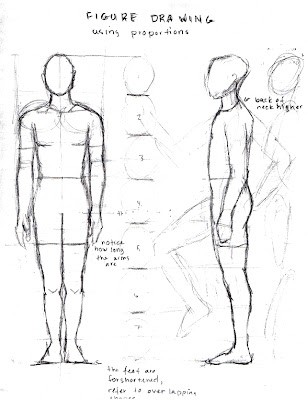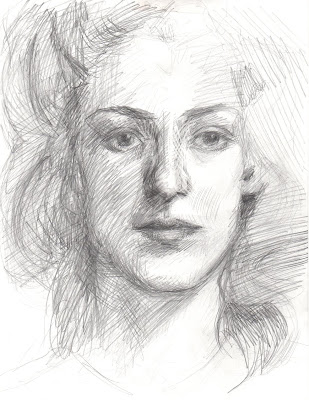
Click on image to enlarge
Get your pencils out and start measuring! Once you learn how to measure using a constant, in this case the scull, you can figure out how to draw almost everything. This is the system used to draw Marvel Comic book characters to drawing chibis.
Just remember that the human body is not block like, but curves along in a long S shape. Otherwise the person you draw might look a little stiff, like an Egyptian sculpture, unless that is what you are going for :)
Here is video of some using their pencil to measure a chair. She does not mention, but it is critical to hold out your arm all the way, and make sure your pencil is perfectly up and down (perpendicular to the ground).










